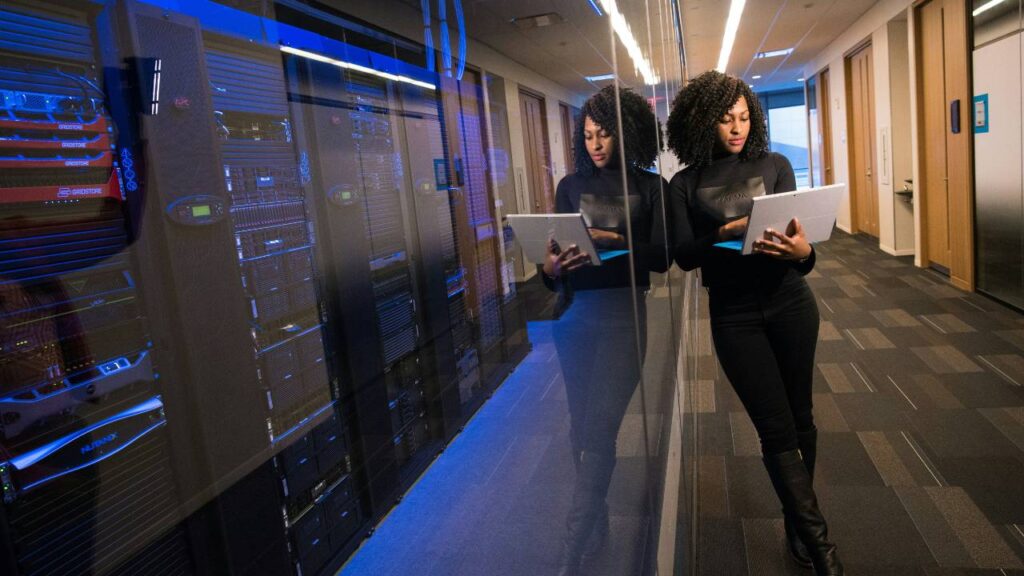
Accurate environmental monitoring is vital for Irish data centres because it safeguards hardware, ensures continuous operations, and supports compliance with regulations and sustainability targets. Ireland’s data centre industry faces unique challenges due to shifting weather patterns and rising demand for reliable digital infrastructure. In this environment, precise monitoring of temperature, humidity, and air quality is not just a technical concern but a foundational requirement for meeting performance expectations and protecting investments.
Environmental Variables That Impact Data Centre Performance

Temperature levels in a data centre must be maintained within a narrow range to prevent server malfunctions. High temperatures can lead to device overheating, while low temperatures might trigger unnecessary cooling costs. Poor heat management can result in hotspots, damaging equipment and impairing performance.
Humidity is another critical factor. Excess moisture raises the risk of condensation, which can cause short circuits. If humidity is too low, static electricity may build up, posing threats to sensitive electronic components and increasing the chances of unexpected outages.
Airflow management optimises cooling efficiency and prevents heat concentration in particular areas. Inadequate airflow can create isolated regions of excessive heat, which traditional cooling systems may not reach effectively. Proper circulation ensures that all equipment receives the necessary cooling.
Dust and airborne particles represent less obvious but significant risks. Dust accumulation on hardware can insulate components, reducing their ability to dissipate heat. In severe cases, this build-up may lead to hardware failures or reduced operational lifespans.
These environmental variables require continuous monitoring to avoid operational risks. Accurate measurement and adjustment of these factors play a key role in safeguarding equipment reliability within Irish data centres.
The Importance of Calibrated Sensors and Monitoring Equipment
Precise environmental monitoring is crucial to the operation of Irish data centres. Sensors such as temperature probes, hygrometers, and particle counters are routinely used to track conditions and to prevent risk to IT infrastructure. Each device must provide accurate readings at all times.
Relying on outdated or poorly calibrated instruments poses several risks. Values that drift outside of true tolerances may go undetected, leading to overheating, condensation, or the build-up of harmful particulates. Even minor inaccuracies can gradually impact server health and operational efficiency.
Maintaining server health requires accurate readings from calibrated sensors—something Calibration Lab in Ireland specialises in for data centres nationwide.
Regular calibration ensures that all monitoring devices reflect the true state of the environment. Data centres that invest in scheduled equipment checks are less likely to encounter data loss, unexpected downtime, or damage from environmental fluctuations.
The benefits are direct and measurable. With precise monitoring, early intervention becomes possible, reducing costly repairs and safeguarding uptime. Using verified and properly maintained equipment enables data centre staff to meet strict regulatory and service standards.
Risk Mitigation Through Proactive Monitoring Strategies

Continuous environmental monitoring enables Irish data centres to address risks before they escalate. By collecting real-time data about temperature, humidity, and air quality, teams are able to identify irregularities early.
Redundancy in monitoring systems ensures that if one sensor fails, others continue to provide vital information. This layered approach increases reliability and reduces the likelihood of missing potential threats.
Alert thresholds are carefully set to signal deviations from standard conditions. Instead of reacting to full-blown incidents, IT teams receive early warnings, allowing for timely interventions.
A key part of server room risk management is setting alerts for environmental shifts before they become critical—giving IT teams time to act before damage occurs.
Real-time dashboards give staff instant visibility into all monitored parameters. This immediate access makes it easier to spot issues and coordinate an effective response, minimising the chances of system downtime.
Compliance, Insurance, and Uptime: The Hidden ROI of Monitoring
Accurate environmental monitoring enables Irish data centres to meet requirements for ISO certifications, including ISO 27001 and ISO 14001. Reliable logs and real-time data simplify audit processes and help keep the facility prepared for regulatory checks. This documentation is often required for ongoing compliance.
When it comes to insurance, insurance providers often request historical environmental data following an incident. Automatic monitoring systems can provide precise records, supporting faster claims processing and reducing the chance of disputes. This evidence may help lower insurance premiums over time because it demonstrates a proactive risk management approach.
Environmental data is essential in case of regulatory audits. Auditors look for proof that temperature, humidity, and other parameters are tracked and controlled. Without reliable monitoring, data centre operators risk fines, operational shutdowns, or reduced credibility.
Uptime service level agreements (SLAs) often depend on the ability to show that environmental standards were maintained. Monitoring systems allow operators to quickly identify potential risks and act before outages occur. This responsiveness is crucial for meeting SLA obligations and reducing the likelihood of penalty fees.
In addition, having robust records reduces liability if issues arise. Clear documentation shows that the required steps were taken to protect data and infrastructure, which is important for client trust and legal protection.
What Makes Irish Data Centres Unique: Climate and Infrastructure Factors

Ireland’s cool, temperate climate creates natural advantages for data centre operations. Cooler air temperatures often make it possible to use more efficient, free-air cooling techniques, reducing reliance on mechanical cooling systems and saving energy.
However, Ireland’s humidity levels can fluctuate significantly throughout the year. Without accurate environmental monitoring, this variability can create risks of condensation or electrostatic discharge within sensitive server environments.
Ireland is known for its strong commitments to sustainability and renewable energy. Many data centres in the country are powered by wind energy, reflecting national efforts to lower carbon emissions and promote green technology adoption.
Local planning policies and grid infrastructure also affect data centre design. The availability of renewable energy sources contributes to operational choices and long-term planning, as reliable green power is increasingly important to clients and operators.
Given the growth of data centres in Ireland, managing microclimates within server rooms is more critical than ever to maintain performance and protect assets. Operators must assess not only the building’s thermal profile but also external weather patterns and energy grid capacity, all of which influence operational resilience.
Conclusion
Accurate environmental monitoring plays a central role in ensuring the reliability and efficiency of data centres in Ireland. Through the use of reliable technology and informed monitoring strategies, organisations can safeguard their infrastructure and meet stringent regulatory standards. Prioritising such measures supports hardware longevity, cost efficiency, and the consistent delivery of essential digital services.

